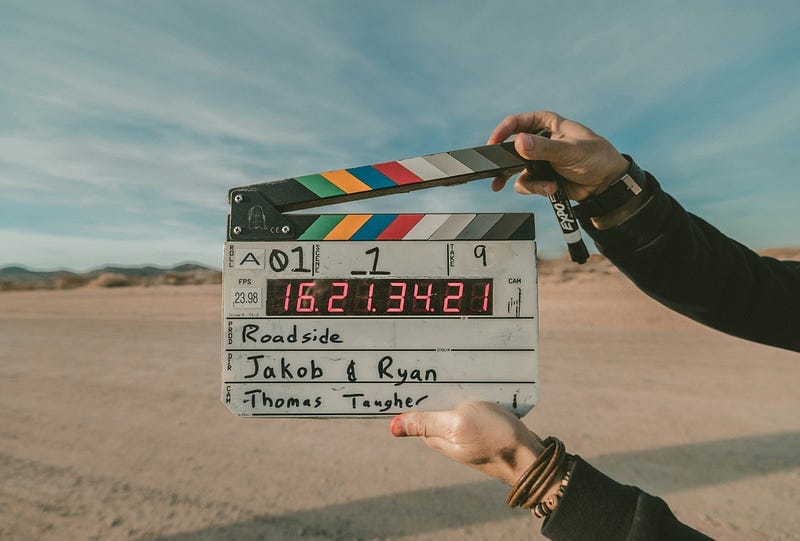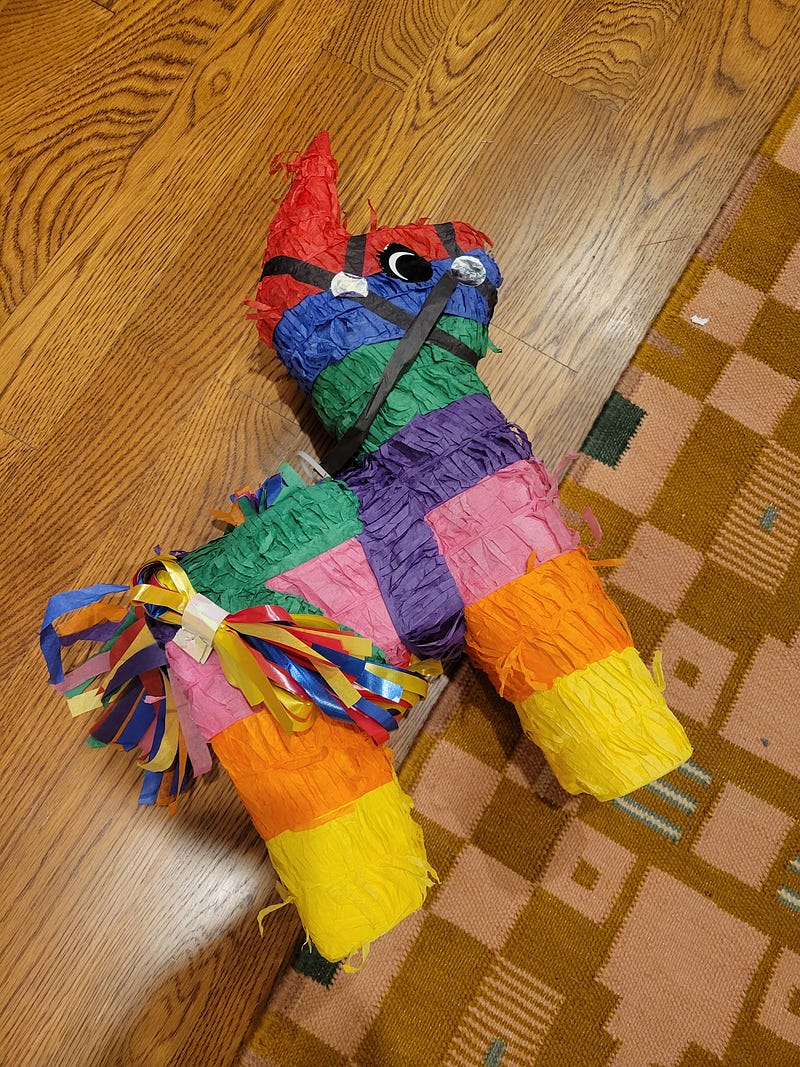The Hackathon of Film: 24-Hour Film Fests
An Outsider’s Experience as a Participant

You have 24 hours to make a 5-minute short film. The challenge starts at 6 P.M. on Friday, and you need to have it planned, shot, edited, and submitted in-person at the studio by 6 P.M. on Saturday, the day after.
That was essentially how I spent the first Friday in March this year. I got off work to meet up with my teammates, and we got to work. So how did this all start? How did I find myself participating in a 24-Hour Film Festival?
In late February, one of my friends shared in a mutual Discord server that they were looking for teammates to join their team for a 24-Hour Film Fest hosted by the Meisner Technique Studio in San Francisco. He had previously taken classes at the studio since he wanted to pursue acting seriously as a career. As someone who has always enjoyed being in creative spaces and thinking creatively, I immediately became curious and wanted to join.

From the onset, the idea of a 24-Hour Film Fest reminded me of Hackathons in the world of Computer Science and Engineering. Typically, during a Hackathon, you would work with a team to create a product prototype within a certain amount of time — usually involving staying up overnight to work, lots of provided snacks, and plenty of corporate merch to take home. So, when I heard that my friend planned to make sure we all got a good night’s worth of sleep and not stay up all night, I was sold. (I had never been a fan of all-nighters.)
Soon after I had declared my interest in joining the team (named “Banana”), it was made known that the team of 4 had been finalized. It would be 3 Meisner folks and me.
Preparation
There’s no real way to prepare for a 24-Hour Film Fest. The prompt isn’t revealed until the timer starts. That said, there are certain things a team can do to prepare in advance.
From the beginning, the lead actress in the team had introduced the idea of shooting the film from the outside of the car’s front windshield. Two examples were provided as references to watch: Orange Drive (2013) and Standby (Short 2016). This would decrease the complexity of how the film would be shot.
In order to test out the logistics, we set up a time to meet ahead of the challenge. My friend had purchased a phone mount for his phone to shoot the scenes and after testing it out in a variety of conditions, we realized that lighting and visibility would be an issue. We needed a polarizing lens to help reduce reflections on the windshield from clouds, overhead trees, or other structures.
In addition to trying out the filming logistics, we decided to give ourselves the homework of coming up with a few backup plans if the prompt somehow didn’t end up allowing the idea for the car setting to work. In addition, both my friend, who would be the lead actor, and the lead actress would prepare and bring some outfits for the challenge.
The Clock Begins
It’s March 1st, Friday, 6:00 P.M. The prompt is emailed out to the team leads who then have to forward the email to the rest of the team members. Each of the teams was assigned to either the “Drama” or “Comedy” genre — we ended up with Comedy.
There are a few required elements to this specific 24-Hour Film Fest:
- The film must start with “You sit on a throne of lies”.
- The film must end in an elevator.
- There must be a character trying to get out of the friendzone.
- 5 required lines and 5 required props.
- A barista calling out the name “Sandy”.
We decided to take the first 2 hours or so to plan out the film. With these elements in mind, we each came up with general plot outlines and discussed our ideas. One of the main questions we had to answer was, “Why would 2 people be in a car together?” Once we settled on an answer to that, we started to brainstorm story elements and a general flow. We figured that by creating a good story, we could then figure out a way to weave in the requirements.
As we brainstormed, we decided to write out a general outline for the plot. There was no script written, it would be completely improvised on set guided by a description of the moment. If we had any night shots, we would film them that night. We did end up having one night shot.
Day of Submission
The next morning, I had to make a run to Party City to go find a piñata for the film as it was one of the required props. Some of the other required props were already things other team members had, and the rest would be acquired as the day progressed.

We shot in a few different locations, and for one of the required elements decided to go to a coffee shop to ask a barista to call out the name “Sandy” and be an extra in the film.
It wasn’t a smooth process wrapping up the filming and editing the short film together. We ran into issues with the slow transfer of files between the phone and the primary laptop. At certain times, we had to trim down our ambitious ideas and make sure that we had the requirements needed to make sure we had a valid submission.
Once the clock hit around 5:30 P.M., we had to make sure we made it to the studio in time. I ended up driving the team up to the studio for in-person submission while the editing continued in the car. Thankfully, the film was complete and transferred into the USB-drive that would be used to submit the film by the time we arrived at the studio.
Upon arrival, I witnessed several other teams making last minute edits and running into the studio building to make sure their submissions were handed over to Jim Jarrett, the Meisner Studio director, in time.
Film Showing
Each team’s film was shown that evening, and it was very fun to see how each of the different teams came up with different interpretations of the required elements and a story to fit those requirements. There were a decent number of meta films (films about making films). At the beginning of the night, Jim Jarrett opened by congratulating everyone on completing this “guerilla filmmaking” challenge. The submissions weren’t perfect, but everyone hopefully came out of the experience with some learnings to take home. One of the main callouts after seeing all the films was the importance of good audio. Audio is what immerses the audience in a film and can also just as easily be a source of distraction.
Being surrounded in this space by all of the actors and actresses made me feel a little out of place. While the evening felt like a good opportunity to meet new people and socialize, it definitely felt like a professional environment where filmmakers could network with each other and catch up. As someone who isn’t actively pursuing the film world, there didn’t seem to be much incentive for folks to talk to me.
Reflections
One specific moment that stood out during this challenge was when I met the lead actress on the team for the first time. She was quite shocked by my involvement as someone not associated with the Meisner Studio. It seemed to her that I had made a strange decision to “give up my weekend”. In fact, I actually volunteered to participate as something fun to do. It was a stress reliever for me to be in such a creative space with other creatives — a necessary and much-needed departure from my day-to-day.
I had previously gone to the Meisner Film Fest in 2023 to support my friend with another of his short films — I was also involved in parts of this one. During that time, I had heard Jim Jarrett speak and could feel how passionate he was about the film industry and how much he stressed to the aspiring actors and actresses he taught that they chose to be involved because they wanted to and were passionate. He made sure to emphasize that the film industry is challenging and isn’t very lucrative for most people. This really stuck out to me as I often find that very true for most creative fields of work (literary, performing, etc.).
I feel privileged to know this friend and have this deeper connection to the film world. I write blogs and poetry, enjoy editing song covers and other videos, and have jumped into the content creation world on various platforms over the years. Having had this experience has only made me more aware of the work needed to make more involved productions. It’s a dedicated investment of time and effort to produce a piece of artwork that might flop. However, I think Jim is very correct in that the creative pursuit is a pursuit of passion. I do this (blog writing, poetry, etc.) because it’s fun, and so does every other creative with their creative pursuits.